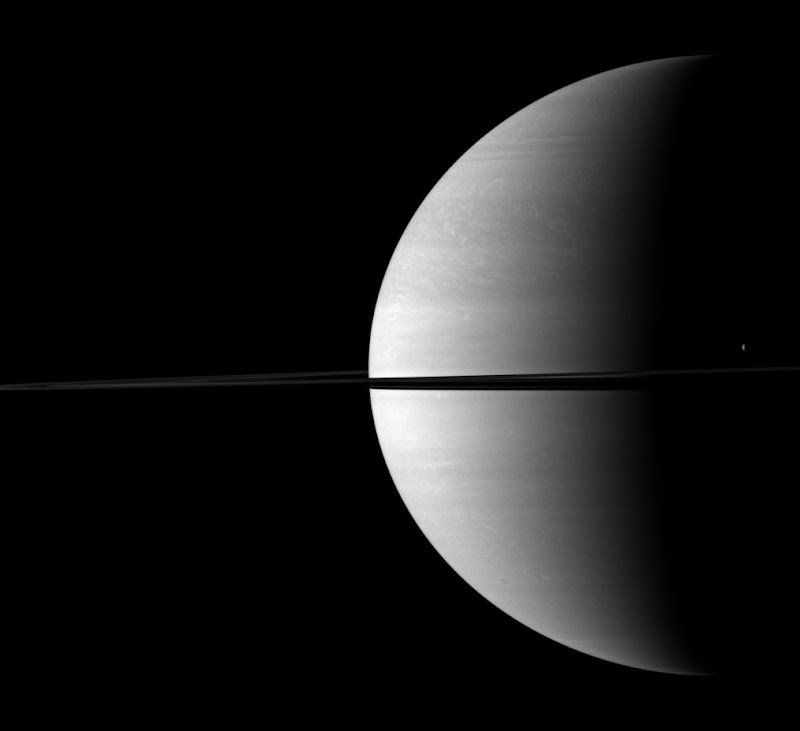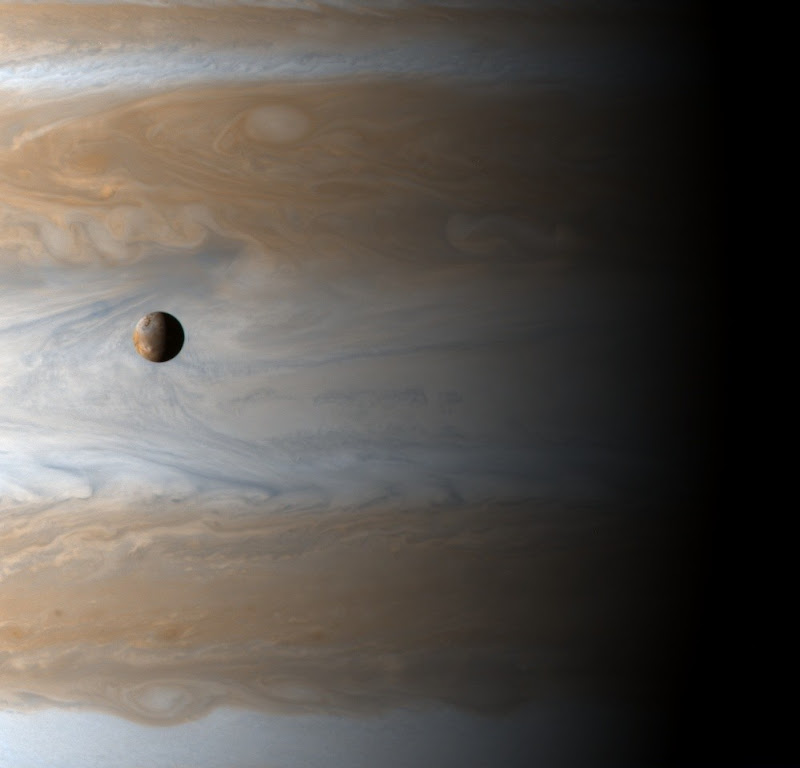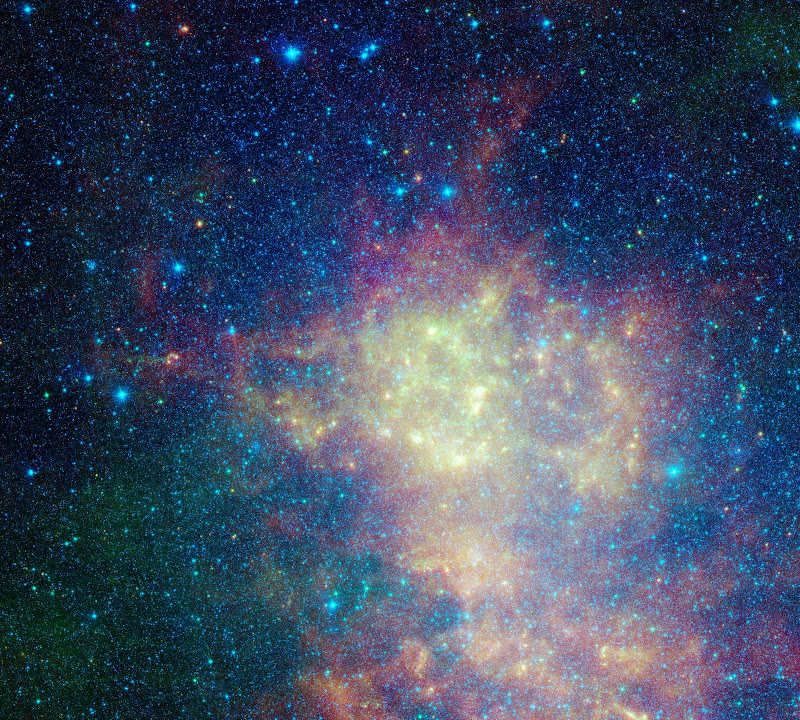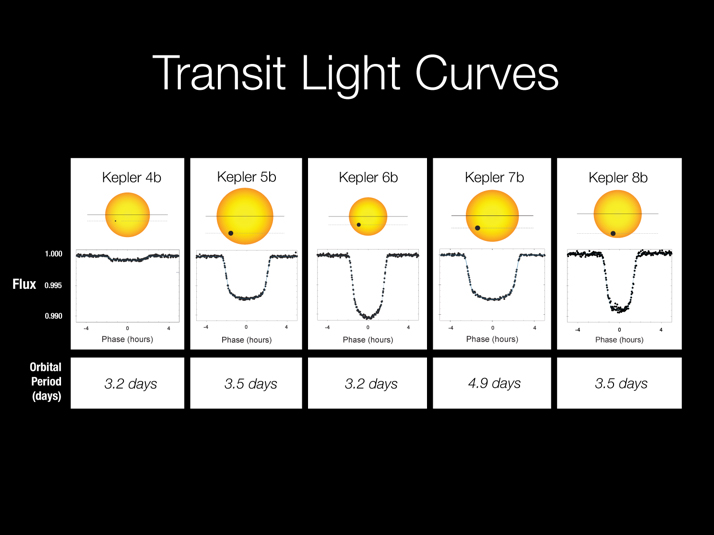More than 12 billion years of cosmic history are shown in this unprecedented, panoramic, full-color view of thousands of galaxies in various stages of assembly. This image, taken by NASA's Hubble Space Telescope, was made from mosaics taken in September and October 2009 with the newly installed Wide Field Camera 3 (WFC3) and in 2004 with the Advanced Camera for Surveys (ACS). The view covers a portion of the southern field of a large galaxy census called the Great Observatories Origins Deep Survey (GOODS), a deep-sky study by several observatories to trace the evolution of galaxies.
The final image combines a broad range of colors, from the ultraviolet, through visible light, and into the near-infrared. Such a detailed multi-color view of the universe has never before been assembled in such a combination of color, clarity, accuracy, and depth. --
Press Release Detailed Images:
Detailed Images:

 Credit: Credit: NASA, ESA, R. Windhorst, S. Cohen, M. Mechtley, and M. Rutkowski (Arizona State University, Tempe), R. O'Connell (University of Virginia), P. McCarthy (Carnegie Observatories), N. Hathi (University of California, Riverside), R. Ryan (University of California, Davis), H. Yan (Ohio State University), and A. Koekemoer (Space Telescope Science Institute)
Credit: Credit: NASA, ESA, R. Windhorst, S. Cohen, M. Mechtley, and M. Rutkowski (Arizona State University, Tempe), R. O'Connell (University of Virginia), P. McCarthy (Carnegie Observatories), N. Hathi (University of California, Riverside), R. Ryan (University of California, Davis), H. Yan (Ohio State University), and A. Koekemoer (Space Telescope Science Institute)










 This true color mosaic of Jupiter was constructed from images taken by the narrow angle camera onboard NASA's Cassini spacecraft starting at 5:31 Universal time on December 29, 2000, as the spacecraft neared Jupiter during its flyby of the giant planet. It is the most detailed global color portrait of Jupiter ever produced... -- NASA/JPL/SSI
This true color mosaic of Jupiter was constructed from images taken by the narrow angle camera onboard NASA's Cassini spacecraft starting at 5:31 Universal time on December 29, 2000, as the spacecraft neared Jupiter during its flyby of the giant planet. It is the most detailed global color portrait of Jupiter ever produced... -- NASA/JPL/SSI  The Galilean satellite Io floats above the cloudtops of Jupiter in this image captured two days after Cassini's closest approach... -- NASA/JPL/University of Arizona
The Galilean satellite Io floats above the cloudtops of Jupiter in this image captured two days after Cassini's closest approach... -- NASA/JPL/University of Arizona  On January 15, 2001, Cassini resumed repeated imaging of Jupiter as it began its departure from the Jovian system. At this time, and throughout the departure phase, only a planetary crescent was visible... -- NASA/JPL/University of Arizona
On January 15, 2001, Cassini resumed repeated imaging of Jupiter as it began its departure from the Jovian system. At this time, and throughout the departure phase, only a planetary crescent was visible... -- NASA/JPL/University of Arizona  This is a montage of New Horizons images of Jupiter and its volcanic moon Io, taken during the spacecraft's Jupiter flyby in early 2007... -- NASA/JHU/APL
This is a montage of New Horizons images of Jupiter and its volcanic moon Io, taken during the spacecraft's Jupiter flyby in early 2007... -- NASA/JHU/APL  Image credit: NASA/JPL
Image credit: NASA/JPL

 Credit: NASA/JPL-Caltech
Credit: NASA/JPL-Caltech
 Credit: ESO
Credit: ESO Credit: ESO/Digitized Sky Survey 2
Credit: ESO/Digitized Sky Survey 2
 Credit: NASA/JPL/Space Science Institute
Credit: NASA/JPL/Space Science Institute







NASA's Kepler space telescope, designed to find Earth-size planets in the habitable zone of sun-like stars, has discovered its first five new exoplanets, or planets beyond our solar system.





